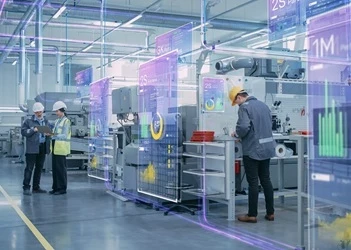Three companies successfully implementing low-code
Discover how implementing solutions via low-code helped AT&T process payments and 3M automate low-to-medium complex tasks
Add bookmark
Low-code and no-code have been heralded as the key to rapid process automation and cost effectiveness across industries, with Gartner predicting that 80 per cent of technology products and services will be built by professionals outside of IT by 2024.
In this article, we outline three companies that are currently implementing solutions through low-code.
AT&T
When the Covid-19 pandemic hit in early-2020, employees were forced to work from home suddenly, leaving AT&T with a unique set of challenges. Payments were being conducted via phone, but a law in the US prevented employees from accessing sensitive customer data such as credit card details.
AT PEX Live: Low-Code Automation 2022, AT&T’s vice-president of automation David C. Williams explained how he developed a platform through low-code technology that enabled employees to process payments while remaining legally compliant. It only took five weeks for the solution to be developed and implemented, and allowed 40,000 people to work from home and process payments globally.
Access the full case study by watching Williams’ presentation here.
3M
At multinational company 3M, a citizen development model was created through a framework called Automation Power Users. The company has been educating its operations employees on low-code and no-code to allow them to develop their own solutions and experiments.
In an interview conducted with PEX Network, the company’s service technology leader, Dimitris Papanikolopoulos, explained that the focus for employees is on delivering low and medium complexity initiatives and use the global developer pipeline only for complicated and global initiatives.
Through the implementation of low-code, Papanikolopoulos aims to democratize technology by focusing on what the operations teams need and prioritize, which can be anything from reporting to creating forms.
Skoda
At car manufacturer SKODA, low-code architect Jaroslav Štěpán has had the most success in automating the processes closest to the users with low-code. The more complex and critical business processes were the subject of a closer analysis with a robotic process automation (RPA) tool.
He explains: “As part of our digitalization strategy, users typically use the low-code platform to automate daily tasks that are relatively simple and doable without any professional IT action involved, but within the defined guidelines.”
Having good documentation on all processes to know what is being automated within them is a key point for Štěpán. He explains: “Someone could leave the department or company and there are some leftovers of automation – if we do not have the documentation we do not know what it is for.”
Using a hybrid model that includes process automation from IT and the citizen development program works for SKODA. Štěpán explains: “In our model, IT creates guidelines and consult the solutions while the application development is in the hands of the citizen developers, but within the defined guidelines.”
Are you currently implementing low-code? Tell us about your experience and challenges in the comments below.


























